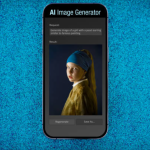The design industry has transformed dramatically in recent years, and 2026 marks a new era where AI-powered design tools dominate creative workflows. Whether you are a graphic designer, marketer, UI/UX specialist, or a business owner, the debate of Canva vs Figma vs Adobe is more relevant than ever. Each platform has introduced artificial intelligence features that promise faster, smarter, and more professional results. But which one is truly the best AI design tool in 2026? Let’s dive deep into their features, pros, cons, and future potential.

Why AI Design Tools Matter in 2026
AI has redefined creativity. Today, designers don’t just rely on manual effort—they combine their creative thinking with machine intelligence to produce unique, professional, and efficient designs. Some of the biggest benefits of AI-powered tools include:
- Time efficiency: Generate templates, images, or layouts instantly.
- Cost-effectiveness: Reduce dependency on large design teams.
- Consistency: AI ensures branding consistency across platforms.
- Creativity boost: AI suggestions help designers break creative blocks.
- Accessibility: Even non-designers can produce professional graphics.
Against this backdrop, let’s analyze the big three: Canva, Figma, and Adobe.
Canva in 2026: The AI Design Powerhouse
Canva has always been popular for being easy to use, but in 2026, it has become a true AI-first design platform.
Key AI Features in Canva:
- AI Magic Design: Instantly generate complete templates based on prompts.
- AI Copywriting Integration: Auto-generate social media captions, ad texts, and product descriptions.
- One-click Branding: Upload your logo and brand kit, and AI applies it across all designs.
- AI Video Editor: Create short-form videos with automatic transitions, subtitles, and music syncing.
- AI Presentation Builder: Turn text prompts into fully designed presentations.
Strengths:
- Extremely beginner-friendly.
- Best suited for social media, marketing, and small business needs.
- Affordable subscription with a free version.
Weaknesses:
- Limited professional-grade editing compared to Adobe.
- Not the first choice for developers or advanced UI designers.
Figma in 2026: The AI-Powered Collaboration Hub
Figma has become the global standard for UI/UX design, and with AI, it has raised the bar even higher.
Key AI Features in Figma:
- AI Layout Generator: Suggests optimal design layouts for apps and websites.
- AI Code Conversion: Converts designs into clean React, Vue, or Flutter code.
- AI Usability Testing: Predicts how users will interact with your design.
- Voice + Gesture Mockups: Create prototypes using natural prompts.
- Collaboration AI: Suggests improvements while multiple designers work on the same file.
Strengths:
- Ideal for product designers, startups, and app developers.
- Cloud-based with real-time collaboration.
- Strong integration with developer workflows.
Weaknesses:
- Less effective for marketing content compared to Canva.
- Requires design knowledge—steeper learning curve for beginners.
Adobe in 2026: The Professional AI Giant
Adobe has been the leader in creative software for decades, and in 2026, its Adobe Firefly AI and Sensei AI features dominate professional design.
Key AI Features in Adobe:
- Generative Fill & Expand: Edit or extend images with AI precision.
- AI-Powered Video Editing (Premiere Pro): Auto-cut, color grade, and add effects.
- AI Branding Kits: Generate professional brand identities.
- Generative 3D Design: Build 3D assets instantly.
- AI Stock Integration: Suggests stock photos, vectors, and templates based on design context.
Strengths:
- Most powerful for professionals.
- Advanced editing options unmatched by Canva and Figma.
- Works across multiple industries—graphic design, video editing, photography, and 3D.
Weaknesses:
- Expensive subscriptions.
- Steeper learning curve than Canva.
- Collaboration is improving but not as smooth as Figma.
Canva vs Figma vs Adobe: Feature Comparison
| Feature | Canva | Figma | Adobe |
|---|---|---|---|
| Ease of Use | ★★★★★ | ★★★★☆ | ★★★☆☆ |
| AI Automation | ★★★★★ | ★★★★☆ | ★★★★★ |
| Collaboration | ★★★★☆ | ★★★★★ | ★★★☆☆ |
| Professional Editing | ★★★☆☆ | ★★★★☆ | ★★★★★ |
| Pricing | Affordable | Moderate | Expensive |
| Best For | Beginners & marketers | UI/UX & product teams | Professionals & agencies |
Which is the Best AI Design Tool in 2026?
Choosing between Canva vs Figma vs Adobe depends on your needs:
- For Beginners & Small Businesses → Canva
It’s simple, affordable, and AI-driven, making design accessible to all. - For UI/UX Designers & Teams → Figma
Its collaboration features and AI coding tools make it the best for digital product design. - For Professionals & Agencies → Adobe
If you need deep customization, advanced tools, and enterprise-level editing, Adobe remains unbeatable.
The Future of AI Design Beyond 2026
- Voice-first design tools: Designers will create apps by speaking prompts.
- 3D and AR integration: All major tools will support immersive content.
- Full automation: AI will not just suggest but execute entire campaigns.
- Cross-platform collaboration: Seamless movement between Canva, Figma, and Adobe projects.
In short, while AI makes design easier, human creativity will still be the backbone of successful projects.
FAQs About Canva vs Figma vs Adobe
1. Which tool is best for beginners in 2026?
Canva is the best for beginners due to its user-friendly interface and AI-powered templates.
2. Can Figma replace Adobe for professional design?
Not entirely. Figma is excellent for UI/UX, but Adobe still leads in graphic design, video editing, and advanced 3D work.
3. Is Adobe worth the high subscription cost?
Yes, if you are a professional designer or agency. For casual users, Canva or Figma is more cost-effective.
4. Which AI design tool is best for team collaboration?
Figma is the winner for collaboration, thanks to its real-time editing and AI-powered teamwork features.
5. Will AI replace human designers?
No. AI will speed up workflows and reduce repetitive tasks, but creativity, strategy, and branding still need a human touch.
Final Thoughts
The Canva vs Figma vs Adobe debate in 2026 highlights one truth: there is no one-size-fits-all solution. Canva is best for quick, accessible designs; Figma dominates in collaboration and UI/UX; Adobe continues to lead in professional, high-end design. The best choice depends on your goals, skills, and budget.
AI will keep pushing boundaries, but the best designers will be those who combine AI efficiency with human creativity.
5 AI Tools to Generate Social Media Posts (Complete Guide)
AI Tools for Video Editing in 2026: The Future of Smart Video Creation
How to Use ChatGPT for Content Creation: A Complete Guide for Beginners









